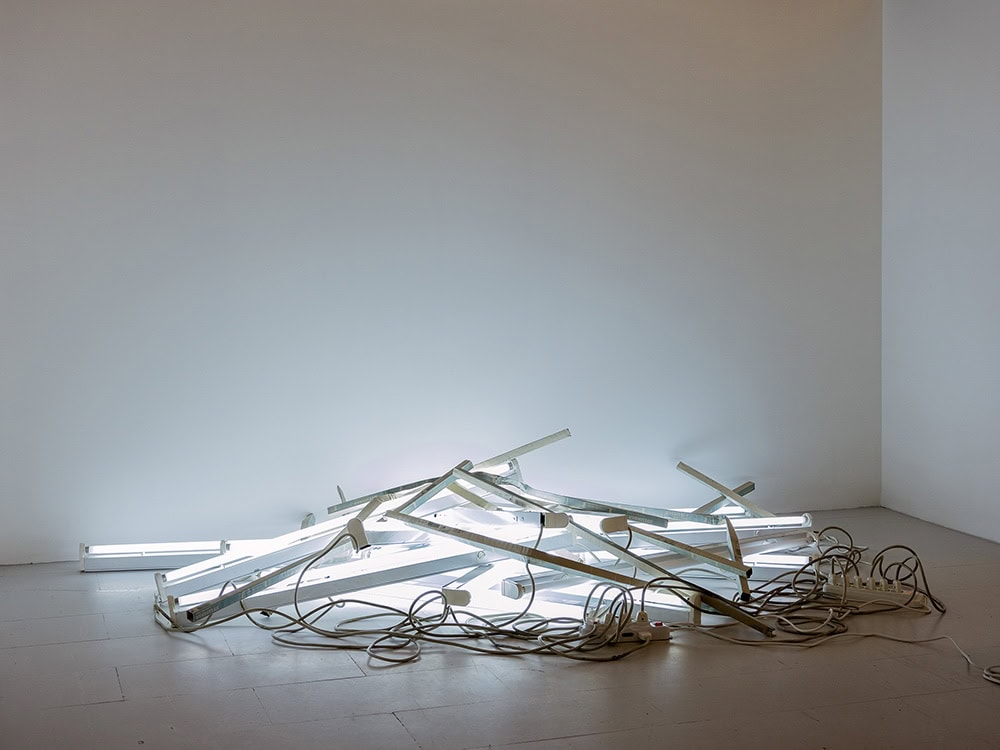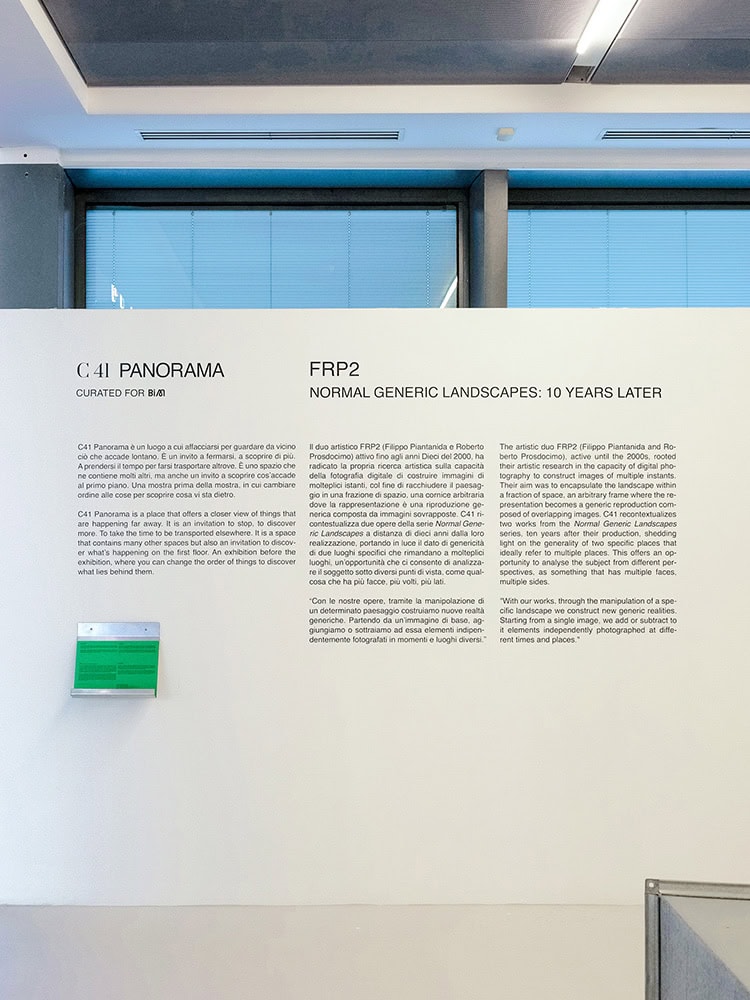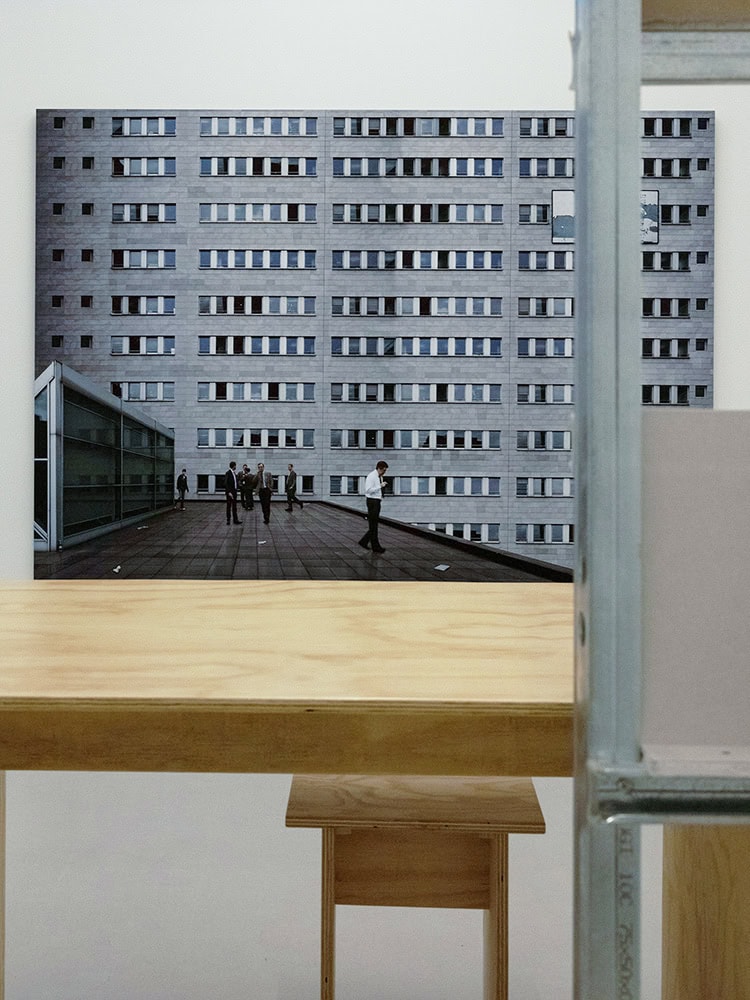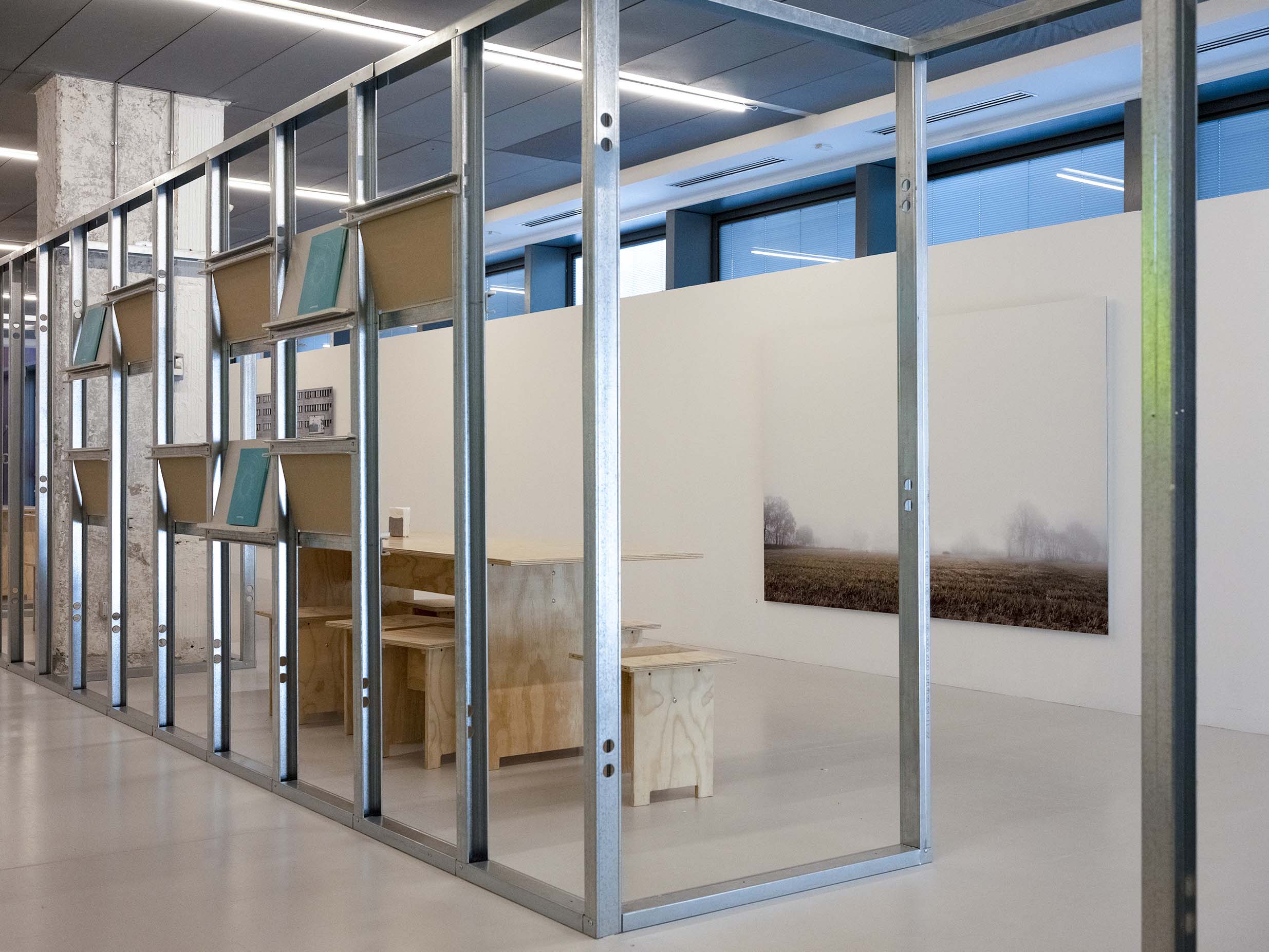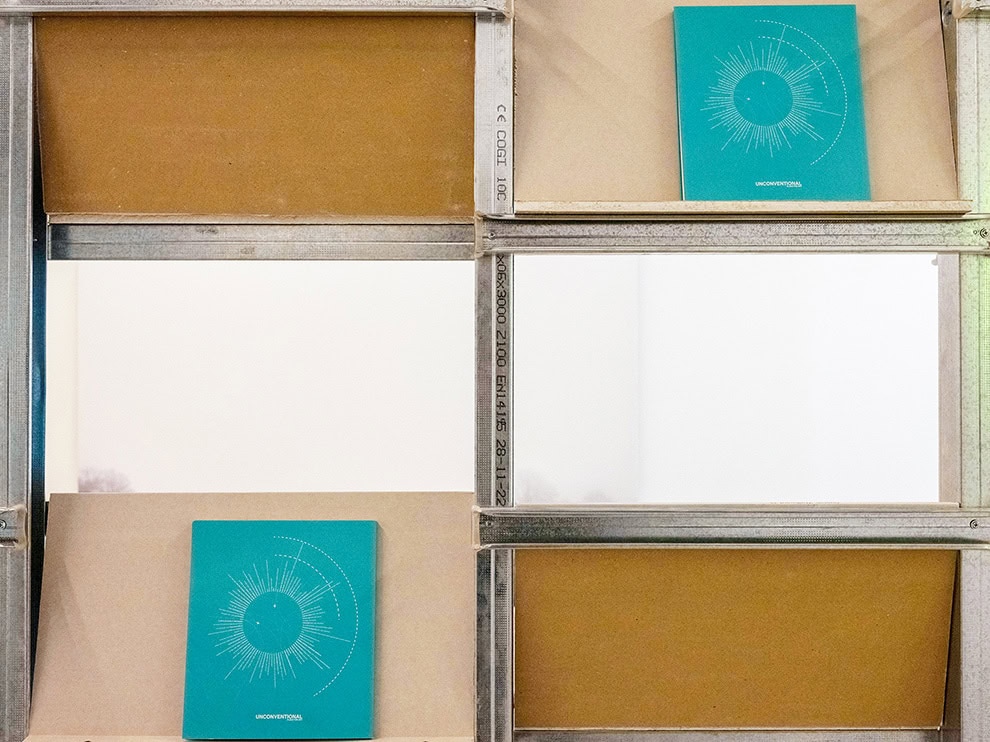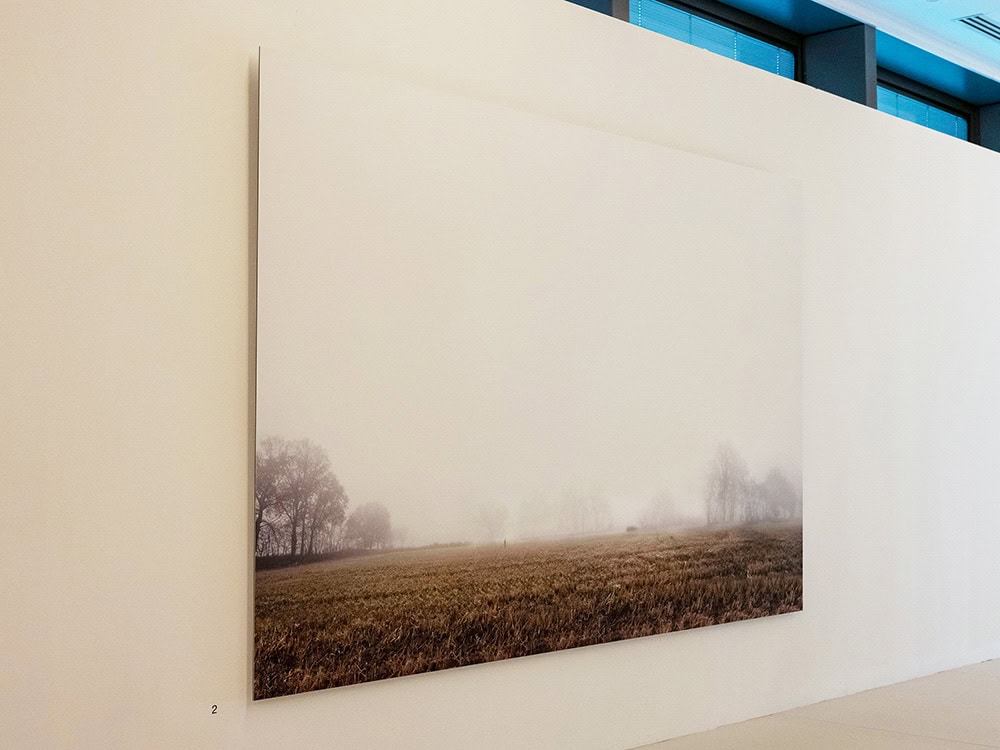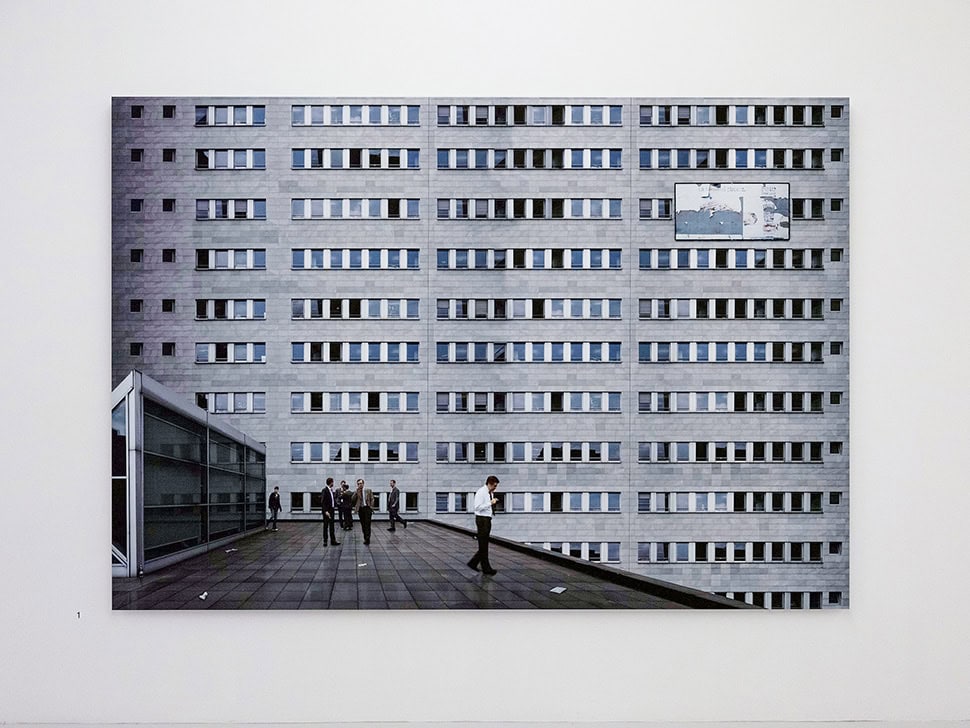Artistic duo FRP2 (Filippo Piantanida and Roberto Prosdocimo)–active until the 2000s–rooted their research in the capacity of digital photography to construct images of multiple instants. They aimed to encapsulate the landscape within a fraction of space, an arbitrary frame where the representation becomes a generic reproduction composed of overlapping images. C41 recontextualises in C41 Panorama two photographs from the duo Normal Generic Landscapes project, ten years after their production, shedding light on the generality of two specific places that ideally refer to multiple places. This offers an opportunity to analyse the subject from different perspectives, as something that has multiple faces, multiple sides.
“Without our works, through the manipulation of a specific landscape, we construct new generic realities. Starting from a single image, we add or subtract to it elements independently photographed at different times and places,” the duo asserts.
Ilaria Sponda: Filippo, how was FRP2 duo born? What was the common research that brought you and Roberto Prosdocimo to work together?
Filippo Piantanida: Roberto and I have been friends since we were kids, we studied photography together, we met at the IED, 20–25 years ago, and we became friends there. We did the university there and when we finished we started to do the photographs and after a few years of separate jobs we joined the ideas and from there, FRP2 was born.
IS: How would you define yourself?
FP: Beautiful, fun, and photographic.
IS: 10 years have passed since you stopped your activity.
FP: Yes, 10 years have passed. From the last exhibition, we did together, actually, 11 years. We went on for a couple of years after the last exhibition. We stopped producing and researching basically.
IS: The last year seems to have been quite intense considering your touring exhibition Normal Generic Landscapes, publications, and talks, right?
FP: Absolutely. In our last year we did a series of five itinerant exhibitions between Italy and Spain with the series you have just mentioned, from which our two photos exhibited at C41 Panorama are taken from. It was tough, three and a half months, full of beautiful things though.
IS: In an interview featured in your book Unconventional Place for Art (2012) you talk about “multiple alternative realities” to which you wanted to reach, starting from a research linked to the digital medium. Do you think in some way you have reached that aim? How so?
FP: I would say “reached” out loud. It is a big word. Without delving too deeply into the philosophical aspect of this research, we were focusing on the problem of indexicality in photography. 10 years ago, the research on this matter here in Europe was very advanced: one of those working on that was Andreas Gursky, for example. In Italy at the time there was no such thing, there was the background of the history of landscape photography that made Italian photography strong, but there were no discussions about the issues of the medium. FRP2 threw themselves into this vortex, more or less infinite. With the photographs we produced we created an alternative space and time. I think we succeeded in reaching multiple alternative realities. The research on this topic is potentially infinite as long as we don’t have any concrete proof of the curvature of time and space. Ours is exclusively an artistic research with the photographic medium. So, basically, we produced digital collages of images, more or less numerous, ranging from 50 to 300, depending on the type of image, made in a physical space and in a real moment. And so, by generating these collages, a plausible space-time is created. This is what we did. Not fake, not true, but plausible, and therefore when it is plausible it is real, objectified obviously by the aura of veracity from which you can’t get out when you look at a photograph
IS: And what about the selection of places you photographed? Was it subjective or dictated by any kind of rule?
FP: Actually, the research of the subject, within Unconventional was dictated by the places that we visited because of our various exhibitions: Milan, Turin, Barcelona, Naples, and Rome. We partly recreated what was the history of Italian landscape. Cityscapes were our reference.
IS: Roberto, how do you define FRP2?
Roberto Prosdocimo: It came as very natural from a friendship when we were students. Taking photos as a duo is quite complicated, you have to create a strong synergy and the friendship that binds us and came first allowed us to do this. We combined our visions and intertwined our practices.
IS: How many years have you been on the field as a duo? What has been the common ground that allowed you to work together on a vision?
RP: For about ten years. It was certainly our shared interest in researching the human and the environment of reference to have brought our work together. Filippo is certainly much more vertical about s’paces’ whether I am closer to the world of portraiture, of humans. The symbiosis between these two elements created the starting point for our joint research. Humans live in space and spaces surround humans. This determined all the research work. On top of that, the simple passion, love and attention for photography as an instrument in transformation made us start as FRP2.
IS: Normal Generic Landscapes is a highly digital project. How did you constructed these digital visions of landscapes?
RP: Initially, our shots were aimed at situations that created a visual imbalance to people due to extreme symmetry and rigidity of the spaces. The work on the landscape was born with the exhibition which toured between Italy and Spain. It was born with the questioning of cityscapes, of these little maps to which we are used, living the cities that hosted us through the whole journey. We took those images through a work of recomposition of the image, a bit like a painter does when he stands in front of a landscape- This approach allowed us to re-construct those landscapes, creating that thin thread that allowed us not to understand how true, fake, reconstructed they were, creating that misalignment between vision and truth. For how they were made, how they were studied, time becomes another determining factor for us. Photography is born to be the interruption, the frame, a single moment frozen in a shot. Our work is a composition of, in this case, 100–150 images, so time freezes. Each image becomes parallel to another and creates a fourth dimension, a fourth dimension of space.
IS: In the specific case of the photo we have in the exhibition, Secret Break, which was taken not far from here, how was the image built?
RP: In this case we have the title of the opera itself that helps to understand the process behind it. Secret Break is understood by anyone: it’s a moment that can last a little, or a lot, it can be a way to detach oneself from reality or maybe to re-synch with reality. Time in this case tells of this moment that for each of us, depending on the situation, will take different timing and values. Even more in this case, the people portrayed during their cigarette break were not there at the same time. Each one has his own personality and time management approaches. This is an extreme story with an even stronger value on the temporal issue.
IS: It’s interesting how seeing this image now, 10 years later, adds another layer of doubt on whether the image is real or not.
RP: The time that has passed helps even more to destabilise the viewer. This was the doubt, the question, the research that we were going to put in a photograph that, with time, has lost this sense of time and truth, but that we had started to explore about 15 years ago.
IS: What’s your relationship to deconstruction and destabilisation of the viewers’ perception? You often depicted iconographic spaces but generic landscapes too.
RP: The concept of ‘generality’ gave this sense of belonging to everyone, but no one. That place, that fog, maybe we didn’t see it last week, it didn’t refer us to an exact place, but we all lived in our lives a landscape of that kind, a generic landscape. It’s part of our memory, part of our life, part of what we have done and lived. This is another way of seeing the work. It takes memories, it transforms them, it makes them unstable, but it makes them recognisable, it makes them normal.
